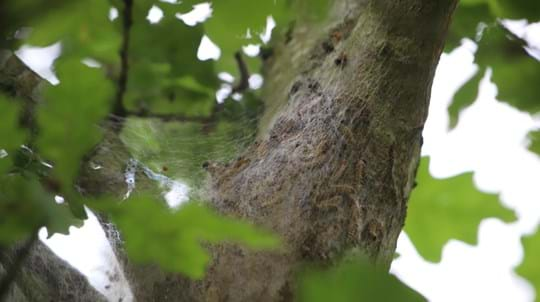
Pests and diseases
What are we looking out for?
The pests and diseases we are most keen to hear about.

Lead Trainer Observatree- Forest Research
Two pest and disease training days were recently held for stakeholders in Wales, one in the South and one in the North. The audience were mainly foresters, arborists and others working in the tree and forestry sectors who were interested in learning about the pests and diseases that threaten their trees and how to prevent their introduction and spread. The workshops concentrated on the particular pest and disease issues of Wales and aimed to improve tree health monitoring by highlighting the signs and symptoms of pests and diseases, thereby making them easier to recognise and outlining the use of the on-line reporting tool Tree Alert to ensure that they can be promptly reported.
The two events were jointly organised by the Institute of Chartered Foresters, Forest Research and Observatree and funded through Focus on Forestry First. During the workshops FR’s Suzy Sancisi-Frey provided participants with the latest information on tree pests and diseases covered by the Observatree project, focusing on those either currently threatening or which pose a future threat to trees in Wales and the rest of the UK.
The pests and diseases highlighted included ash dieback which has become a major concern in Wales and the oak processionary moth which was intercepted in Wales for the first time last summer. Various threats to spruce trees such as Ips typographus, the spruce aphid and Neonectria disease were also mentioned. An update and information on the larch pathogen Phytophthora ramorum which has had a major impact on forestry in Wales was also provided, along with the signs and symptoms of Xylella fastidiosa and the emerald ash borer, two potential threats on the horizon.
As part of the workshops, Mick Biddle and Becki Gawthorpe from Forestry Commission emphasised the importance of biosecurity, highlighting the practical measures that can be taken to reduce the risk of introduction and spread of tree pests and diseases as well as some interesting case studies.
A panel session in the afternoon gave participants an opportunity to ask questions and discuss tree health issues with a panel of experts comprising Tom Jenkins from FR, Sam Milner of Natural Resources Wales and Mark Hilleard from Welsh Government. This also enabled attendees to ask questions and to hear about current and future tree health policy
Selected Observatree resources were freely available to attendees along with a display of examples of pests and diseases and the damage they can cause. Also included were a variety of exhibits demonstrating various pathways that enable pests and diseases to enter and move around the UK.
These two events were well-received and all attendees were able to use the training as part of their continuous professional development (CPD). The attendees explained that they found it particularly useful to hear from tree health experts based in so many different organisations and to access the excellent training resources of Observatree. Many were so inspired by the day that they are considering becoming Observatree volunteers themselves and this was particularly the case in North Wales where almost half of the 50 attendees expressed an interest! Whilst we are not currently recruiting for the project, their names were added to our waiting list to be contacted again when we are next seeking additional volunteers.